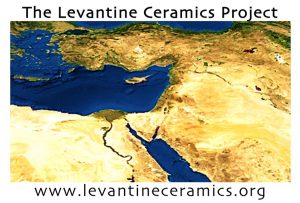
RE-INTRODUCING THE LEVANTINE CERAMICS PROJECT
By Andrea M. Berlin
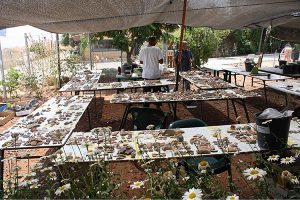
Pottery from a single day of excavations at Tel Kedesh, Israel, laid out for study. Photo by author. Courtesy of the Tel Kedesh Excavations.
Of all material remains recovered by archaeologists, the most abundant is pottery. From the sixth millennium BCE down to the early twentieth century people have made clay vessels to store, prepare, cook, and serve food; hold perfume; ship commodities; burn oil for light; contain or serve as votive offerings; and, finally, help settle the dead in a more comfortable afterlife. Pottery leads us down a human path; it makes people visible.
The advantages of pottery go hand-in-hand with a huge obstacle: it is very hard to effectively disseminate all the information it conveys. Print publication has been, and continues to be, the most common mode. But print is ill-suited for fostering discussion or relaying changing ideas. Digital initiatives are an obvious solution, and several do exist that focus on pottery. All, however, are static repositories that enfold what is known at a certain moment in time. As archaeologists, we are always in a mode of discovery: finding new sites and more data, re-thinking older ideas. We need tools that can keep up, help us bring recent ideas into dialogue with older material, are easy to use, foster sharing, and enable us to readily learn from one other.
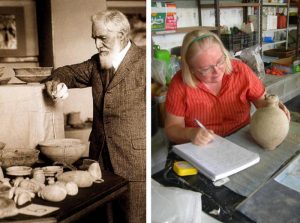
William Flinders Petrie, examining pottery from Tell el-Far’ah South, 1927, and Meg Morden, registering pottery at Tel Kedesh, 2008. Photo by author. Courtesy of the Tel Kedesh Excavations.
The Levantine Ceramics Project (LCP) is such a tool. The LCP is a custom-built, open access web application with a wide focus: all ceramics produced anywhere in the greater Levant, meaning the modern countries of Turkey, Syria, Cyprus, Lebanon, Israel, Jordan, and Egypt, from Neolithic times (c. 5500 BCE) until the end of the Ottoman era (c. 1920 CE).
How does it work?
The LCP was built to be easy to use. It is free and open: anybody can consult the site, and anybody can register as a contributor and submit information, whether newly studied or long published, on ceramic wares and petro-fabrics, individual vessels and illustrations, petrographic descriptions and thin-sections, and kiln/workshop sites. There are no restrictions on terminology; contributors may submit the information they have, using their own names and descriptions. All submitted information remains linked to its original contributor(s), thus maintaining intellectual property, and contributors can edit their entries at any time. In terms of privacy, there are three sharing options: public, meaning fully visible to anybody who consults the site; restricted to specified individuals; or private (specific choices are easy to change). Finally, every page has a “get citation” button, making each entry a stable, digital publication.
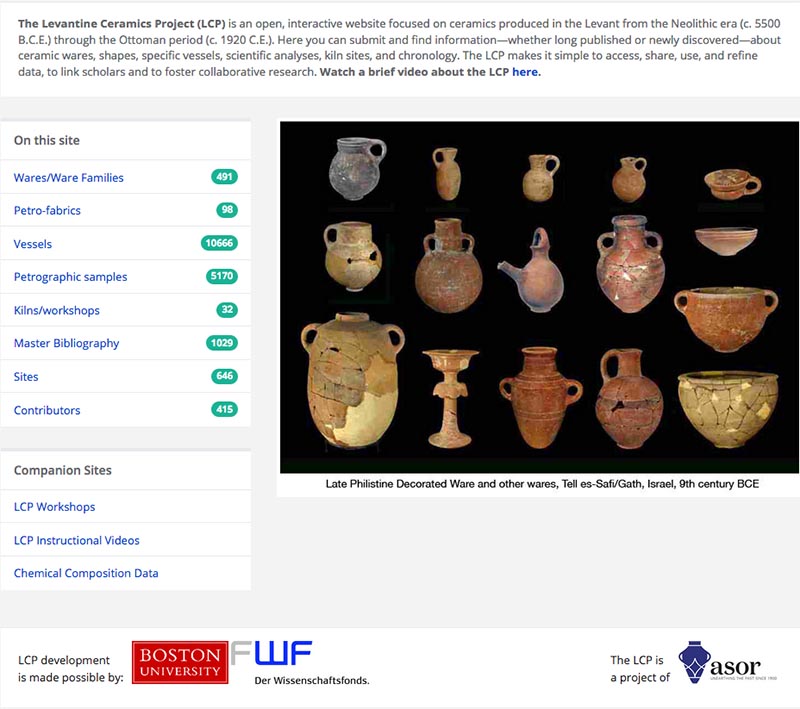
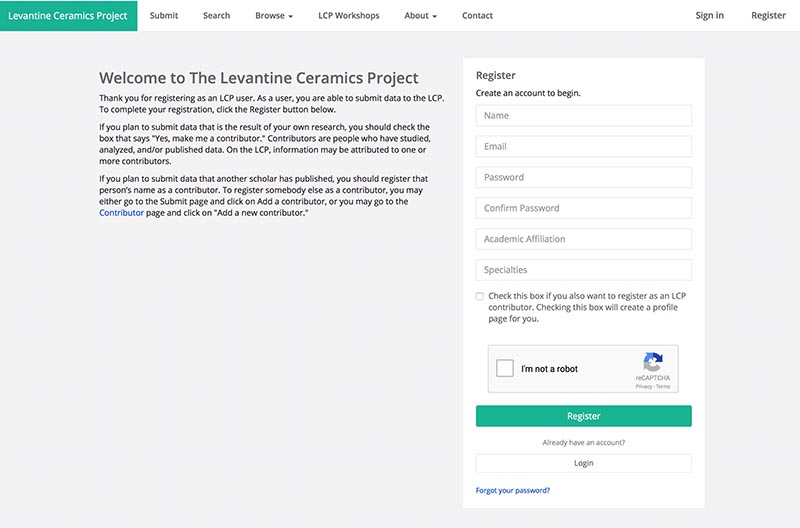
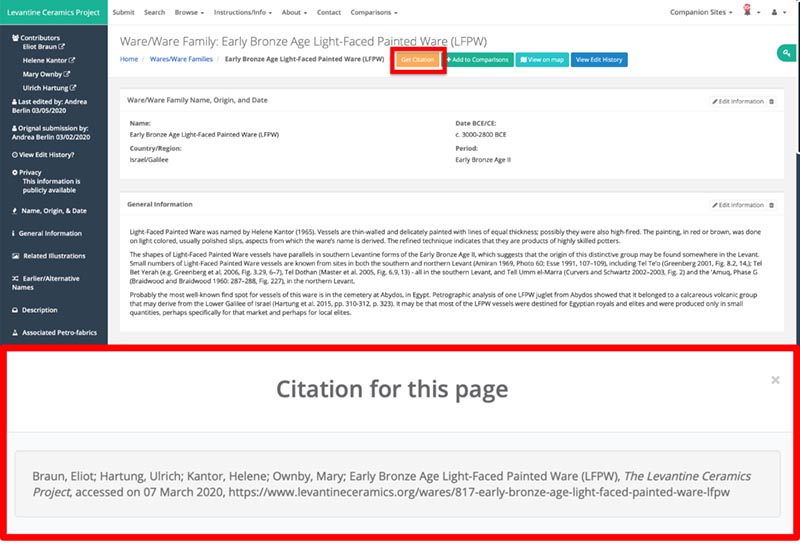
The LCP is not only an archive. It is also a tool for research. One example: maps! On the display pages for vessels, wares, and petrographic thin-sections, you can click a “View on map” button. Once on the map page, you can find a wide array of related data. For example, when viewing a vessel, you can ask to see other vessels of that shape, ware, date, etc. When viewing a ware, you can ask where vessels of that ware appear, where kilns producing that ware are, etc. Filter boxes allow you to refine displayed results.
Another analytical feature, introduced in 2019, is Edit History. When a contributor changes an entry, s/he has the option to keep a record of those changes via ‘edit history.’ On each display page, users can click a “View Edit History” button, which shows what was changed, and when, along with the earlier version. Over time, Edit History will create a history of scholarship about Levantine ceramics.
Digital and Print: long-term partners
The LCP offers a way to amplify the power of ASOR’s (and other) print publications. By submitting relevant ceramic data to the LCP in advance of publication, LCP links can be included in published print and digital versions. This will help craft a true partnership between print and digital platforms. At any future point, anyone reading an original print publication (even in digital form) can click on an LCP link and go directly to the relevant page, learn about any new or changed aspects, and also connect that object or ware to other data on the site. LCP pages have stable URLs and so will stay reachable; edits can be viewed in Edit History. A partnership between the LCP and print will help maintain the relevance of publications, and enhance their long-term scholarly utility.
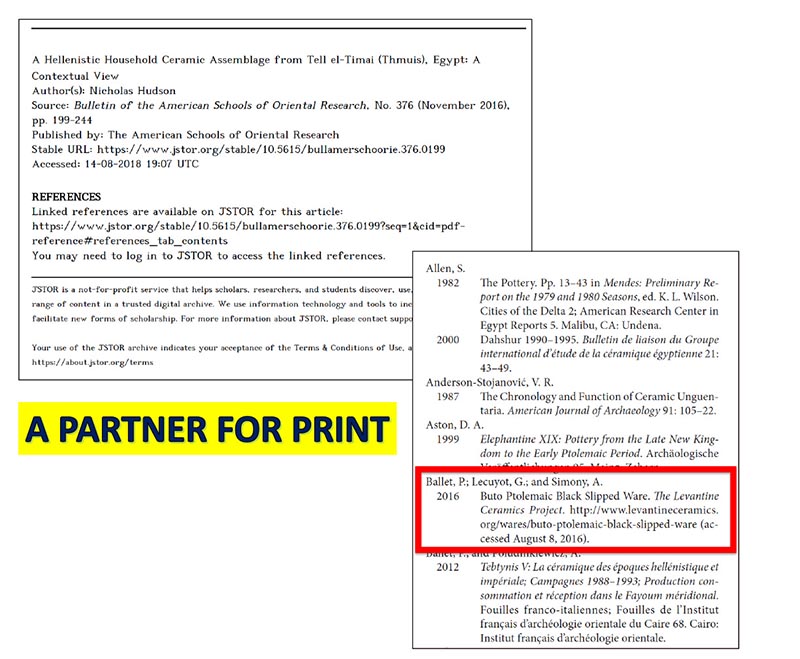
Connecting scholars to scholarship
What is the future of this collaborative, crowd-sourced project? The numbers tell the story. When we launched LCP 1.0 in 2011, we had 29 contributors, about 200 vessels, and less than 100 page views. We are now humming along with LCP 5.0: easier submission process, notifications, new analytical tools like maps and comparisons – (and, coming soon, lightable!). As of writing (March 26, 2020), the LCP has 410 contributors, over 10,500 vessels, over 5,000 petrographic thin-sections, 100 petro-fabrics, and almost 500 ceramic wares spanning 7,000 years (the numbers keep going up so check out the LCP front page to see the latest total). In 2019, the site had over 55,000 page views, with each session lasting over five minutes.
As for where those page views are coming from, check out the map from Google Analytics below. The colored countries are ones in which somebody consulted the LCP in 2019. So if you think that the subject of Levantine ceramics is too arcane, something of a deep hole that only a specialist could care about – then think again!
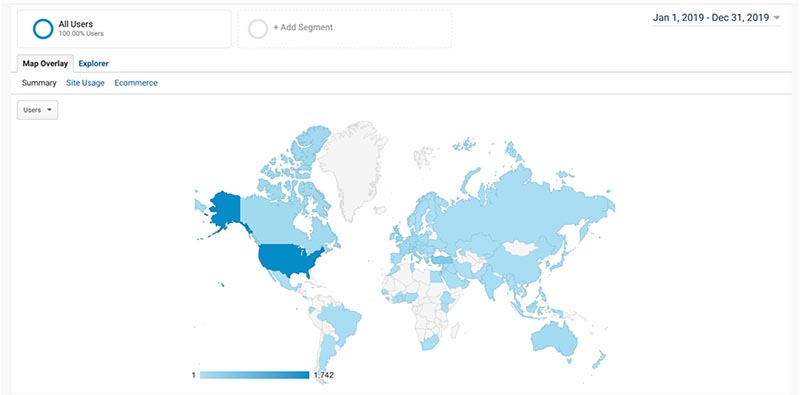
Eventually the LCP will allow archaeologists and other researchers to address the sorts of research questions for which ceramics offer basic evidence. Examples: what is the relationship between an imperial economy and local prosperity? Under what conditions do small-scale producers expand? Is the vitality of major exporting centers a function of location, political circumstance, or resource advantages? Do certain clay types lend themselves to certain types of products across long periods of time? Today, such queries are difficult to pursue; it is simply impossible to collect a sufficient amount and variety of data. By continuing to build up the LCP’s storehouse of information and introduce new analytical features, we will create an ever more robust tool.
So if you are an archaeologist who works in the Levant, please consider registering and submitting material to the site. Together we are building a resource to open up the past to everyone.
Here is a brief introductory video on the LCP. Enjoy!
American Society of Overseas Research
The James F. Strange Center
209 Commerce Street
Alexandria, VA 22314
E-mail: info@asor.org
© 2023 ASOR
All rights reserved.
Images licensed under a Creative Commons Attribution-NonCommercial-ShareAlike 4.0 International License
COVID-19 Update: Please consider making payments or gifts on our secure Online Portal. Please e-mail info@asor.org if you have questions or need help.
